
“King Kong” American Theatrical Poster
Director: Merian C. Cooper
Co-director: Ernest B. Schoedsack
Cast: Fay Wray, Robert Armstrong, Bruce Cabot, Frank Reicher, Sam Hardy, Noble Johnson
Running Time: 105 min.
Review by JJ Hatfield
The one thing that makes the original version fantastic is the special effects. That may sound a bit absurd considering the state of the art and ever evolving fx we have today however that just adds relevance to my comment.
Willis O’brien created the special effects he pioneered in the 1925 film “The Lost World”. Lost World was about pre – historic times/science fiction/thriller filled with numerous never seen before dinosaurs. Willis brought all of his experience and new ideas to the Kong project. Without his enormous experience in stop motion animation King Kong would never have been made.
Obviously the primary technique involved was stop motion animation. Many men must have spent many hours hunched over a table working as fast as they could to do that tedious and pain staking work but the result was something never ever seen before! An ENORMOUS gorilla moving, vocalizing, and doing pretty much whatever he wanted to do. There has always been a somewhat more frightening aspect to Kong because of the somewhat jerkiness resulting from stop motion animation.
Everyone should see this film even if you are not required in film school. It takes a bit to get into the movie because it is so different. All the bucks, allegedly around $700,000. went to creating Kong and his world. The village, the natives, the dinosaurs that were trying to interfere with Kong and his woman. Interestingly enough the native scenes really weren’t that bad. I think the B&W somehow helped in that regard.
Fortunately the story allows little time for characters to “act”. In this film that is a good thing. The main players Carl Denham (Robert Armstrong), Ann Darrow (Fay Wray) and Carl (Bruce Cabot) are one dimensional characters. But Damn! Wray screams well but it gets to be too much after awhile. The dialogue is terrible and one dimensional as well, like cardboard, just flat.
Denham is a famous director who insists on lensing all the footage after a camera man was frightened by a charging animal and missed the shot years ago. He recruits his “cast” as well. The audiences have indicated they wanted more females in the movies so he sets out to find a female actress in one night. He checks out the missions, etc. and finds his girl on the street after she steals some food and he feeds her a meal and a line about being the perfect actress. Ann doesn’t seem to be very rational in her thinking – she never met this man and he wants her to go on a cargo ship with a bunch of strange guys for an extended trip to who knows where. But a girl’s got to grab the moment I guess so she agrees and they are off!
As soon as they are underway the men begin to make negative comments about having women around, and how much trouble they are in general. Ann seems to think this is flirting. Of course one of the crew, Carl is falling in love and so is she. Finally Denham tells the skipper where they are really headed – Skull Island! When they near the island fog envelopes all. They can hear the sounds of drums..drums and something else, it sounds like the natives are chanting “Kong”. The fog finally lifts and they can see the island and a huge wall with a gate. They go ashore in a small boat to check things out. The natives do notice them and take a special interest in the blonde and want to trade six of their women for her. Naturally they say no, but the villagers are pissed off and the crew hastily retreats to their ship. During the night you hear Ann scream as she is abducted by the natives to be a sacrifice for King Kong!
Kong is 35 feet or so of a giant ape that walks on his hind legs, roars and beats his chest to declare himself the baddest ass on the island. But after he kidnaps Ann the crew has to get her back even though Denham still wants to capture Kong and now the crew knows it.
They finally arrive in New York and everyone thinks their troubles are over and the money is rolling in like the tide. It’s time to show off King Kong! In another amazing effect Kong is chained to a huge wall behind the actors. Pretty cool stuff for 1933! Unfortunately when Ann comes onstage the flashbulbs start popping and Kong goes ape! (sorry, I just couldn’t help myself) Denham tries to get them to stop because Kong believes they are hurting his beloved. That launches his smashing most of downtown New York and his Empire State Building climb. When things look bad Kong puts Ann by his feet so he can swipe at the biplanes. After Ann screams, Kong cries out in at first anger and then in pain. After quite an arsenal has been thrown at him Kong finally succumbs. In a completely poor summation Denham says that it “was beauty that killed the beast.”
This review is for the Korean release of King Kong. This version contains scenes edited out of other versions including Ann getting “stripped” when she is asleep as Kong tries to pick her up. And numerous scenes are included showing close ups of Kong munching on a native or a New Yorker.
I do recommend this film for everyone. You will most likely be viewing it more than once or twice. The detail is incredible however do not expect ‘picture perfect’ quality. There are a few scenes with black areas, scratches, and audio crackles but it doesn’t hurt the story. Another reminder of just how incredible it is the film even exists after so long. This is an amazing film in many ways. Do not watch the latest hi tech action movie and then King Kong. I would advise against watching the “colorized’ (reviewer spits) version simply because it was not made that way. The greedy bastards are only looking for more money squeezed out of an old film. Don’t buy it, literally.
Considering all of the movies I have viewed and reviewed “King Kong” stands in a class all it’s own for the special effects.
Two interesting notes from the IMDb:
1) The laserdisc edition of the film includes the first ever audio commentary.
2) This film was successfully reissued worldwide numerous times; some claim it was the first ever re-released film. In the 1938 reissue, several scenes of excessive violence and sex were cut to comply with the Production Code enforced in 1934. Though many of the censored scenes were restored by Janus Films in 1971 (including the censored sequence in which Kong peels off Fay Wray’s clothes), one deleted scene has never been found, shown publicly only once during a preview screening in San Bernardino, California in January 1933. It was a graphic scene following Kong shaking four sailors off the log bridge, causing them to fall into a ravine where they were eaten alive by giant spiders. At the preview screening, audience members screamed and either left the theatre or talked about the grisly sequence throughout the subsequent scenes, disrupting the film. Said the film’s producer, Merian C. Cooper, “It stopped the picture cold, so the next day back at the studio, I took it out myself.”
JJ Hatfield’s Rating: 9.5/10 Highly Recommended

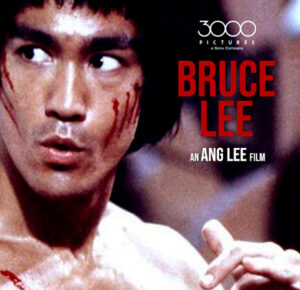
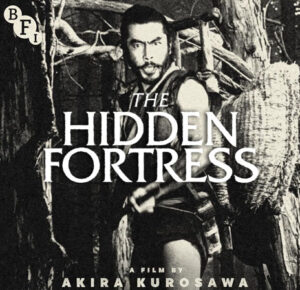
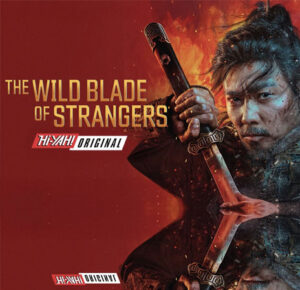
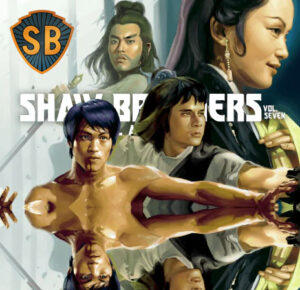














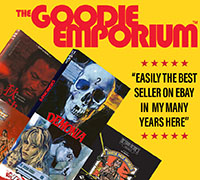

1 Comment